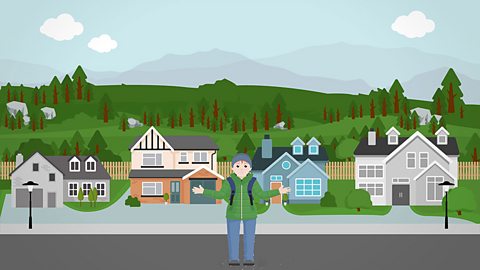What is a lake?

A lake is an area filled with water that is surrounded by land.

Watch: Learn about the biggest lake in the UK
Explore the different lakes of the UK.
Guess where I am?
This may look like the sea, but this is actually a huge lake.
My name is Charlie and today I'm at Lough Neagh in Northern Ireland to find out everything I can about lakes.
"Lough" is the Irish word for "lake" and Lough Neagh is actually the biggest lake in the UK and when I say big, I mean BIG.
It's about 30km long and 12km wide and 125km around the shoreline. It contains over 3.5 trillion litres of water. Lough Neagh is an important 'reservoir', which means it's used as a water supply. Turn on a tap in hundreds of thousands of homes in Northern Ireland and this is where your water comes from.
All kinds of birds, animals and fish live here, but Lough Neagh is most famous for eels! Every year 400 tonnes of Lough Neagh eels are shipped off to other countries, where there must be a lot of people who like to eat them.
Scientists think that Lough Neagh was formed millions of years ago. Massive cracks in the Earth's crust - called 'faults' - caused a large area to sink down and make a huge basin. But not all lakes are made by the forces of nature.
Ladybower reservoir in the Peak District in Derbyshire was made by engineers. More water was needed for cities nearby - Sheffield, Nottingham, Derby and Leicester.
So this long, deep and narrow valley was chosen as the perfect place to build a reservoir. A huge and very thick wall called a 'dam' was built across the valley to trap the water of the River Derwent.
The reservoir was constructed between 1935 and 1943, but it took another two years for it to fill completely. People visit Ladybower Reservoir to walk or cycle along the shore, to fish in the water, go birdwatching and at Lough Neagh you can do all of that, as well as going sailing or swimming too!
You could find out where your nearest lake is and what there is to do there.
I've had a good day, but now I'm off for my dinner. Bye.
I hope it's not eels!
Lakes in the UK
In the UK, there are around 40,000 lakes. Every lake is different and varies in depth and size.
Lakes can have other names. They are known as lochs in Scotland and loughs in Northern Ireland.
Types of lakes
Lakes can be formed in two ways.
Natural lakes
Lakes are formed naturally when there are massive cracks in the Earth's crustThe outer layer of the Earth's surface made from rock.. This causes the crust to sink down into the surface and form a basinA dip in the ground caused by the Earth's crust sinking..
During the Ice AgeA period of time around 18,000 years ago when the Earth's temperature dropped and was covered in ice., cracks formed as the glaciers carved and shaped the Earth's surface as they moved along. When the ice eventually melted and turned into water, it filled the basins which then created a lake.
One example of a natural lake is Lough Neagh, in Northern Ireland. This is the biggest lake in the UK and contains over 3 and half trillion litres of water.
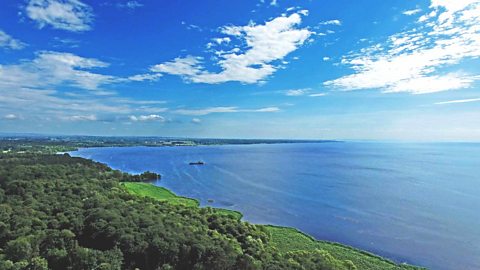
Man-made lakes
Lakes can also be made by humans.
Ladybower Reservoir is an example of this. A reservoir is a man-made lake built by engineers to help provide water for the community.
The water that fills Ladybower Reservoir comes from the River Derwent. Surrounding the reservoir is a DamA barrier used to stop water flooding the land. that traps the water to make sure it is constantly topped up for the villagers who need it.
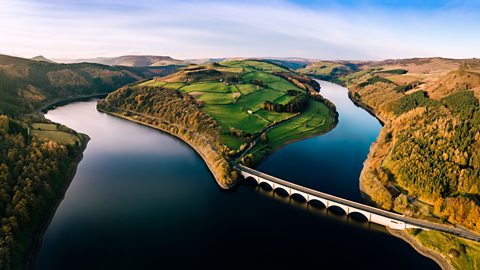
Purpose of lakes
Lakes are important for humans. They provide storage for water, which can be filtered and used for drinking and washing.It is dangerous to swim in lakes and reservoirs. They tend to be much colder and can have a strong current, which makes it more difficult to swim safely.
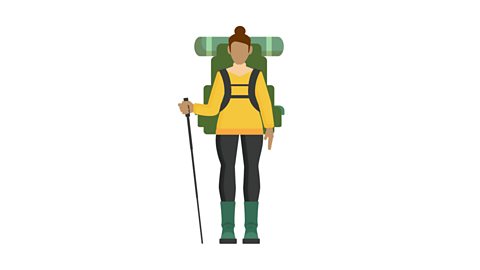
They are good for activities such as:
- fishing
- birdwatching
- walking or cycling beside the water

Lakes can also be a habitat for plants and animals. The following can be found in a freshwater habitat:
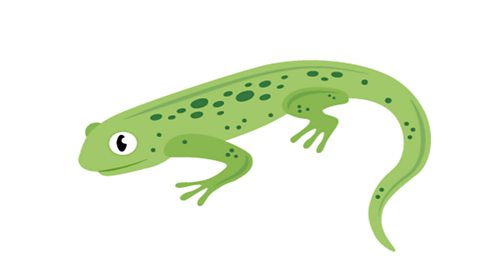
- dragonflies
- snails
- otters
- frogs
- newts
- fish

Activities
Quiz: Who's down at the lake?
Quiz: Lakes - true or false
Bitesize Primary games. gameBitesize Primary games
Play fun and educational primary games in science, maths, English, history, geography, art, computing and modern languages.

More on Geography of the UK
Find out more by working through a topic
- count6 of 32

- count7 of 32
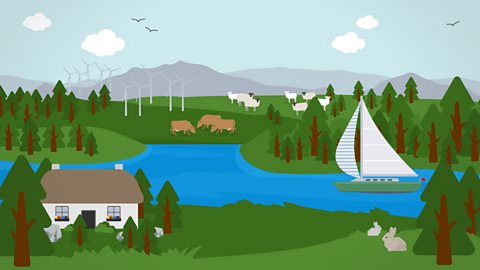
- count8 of 32

- count9 of 32
